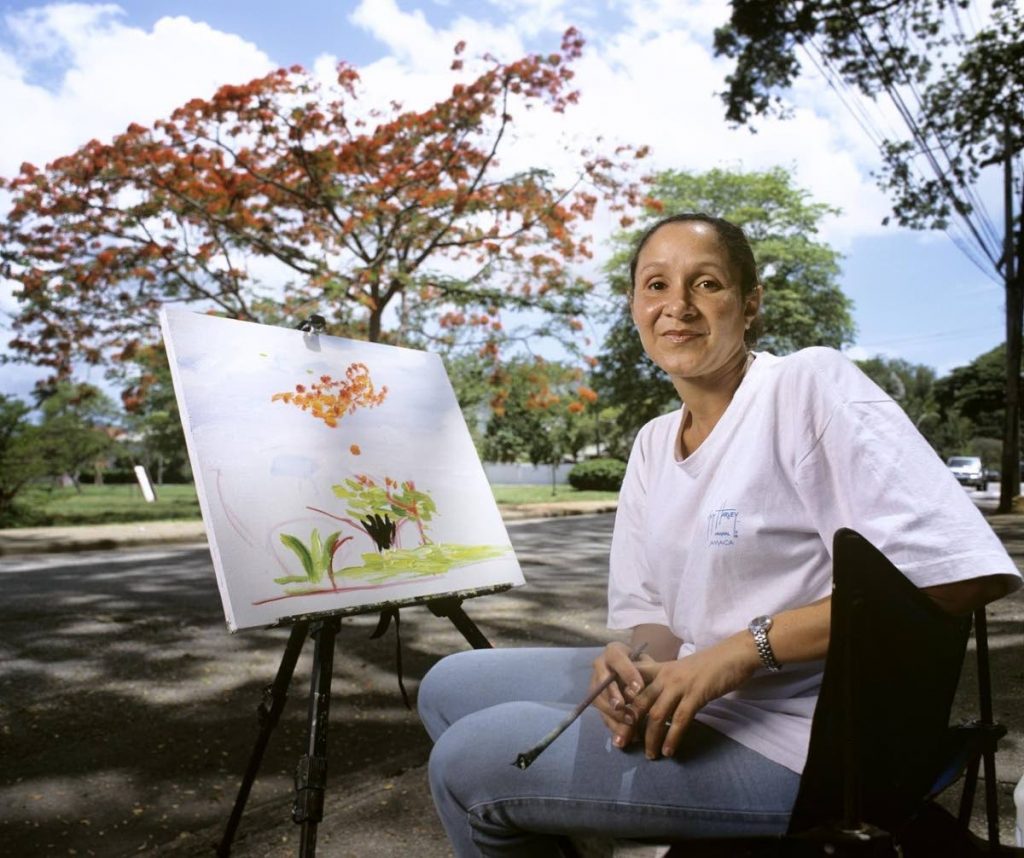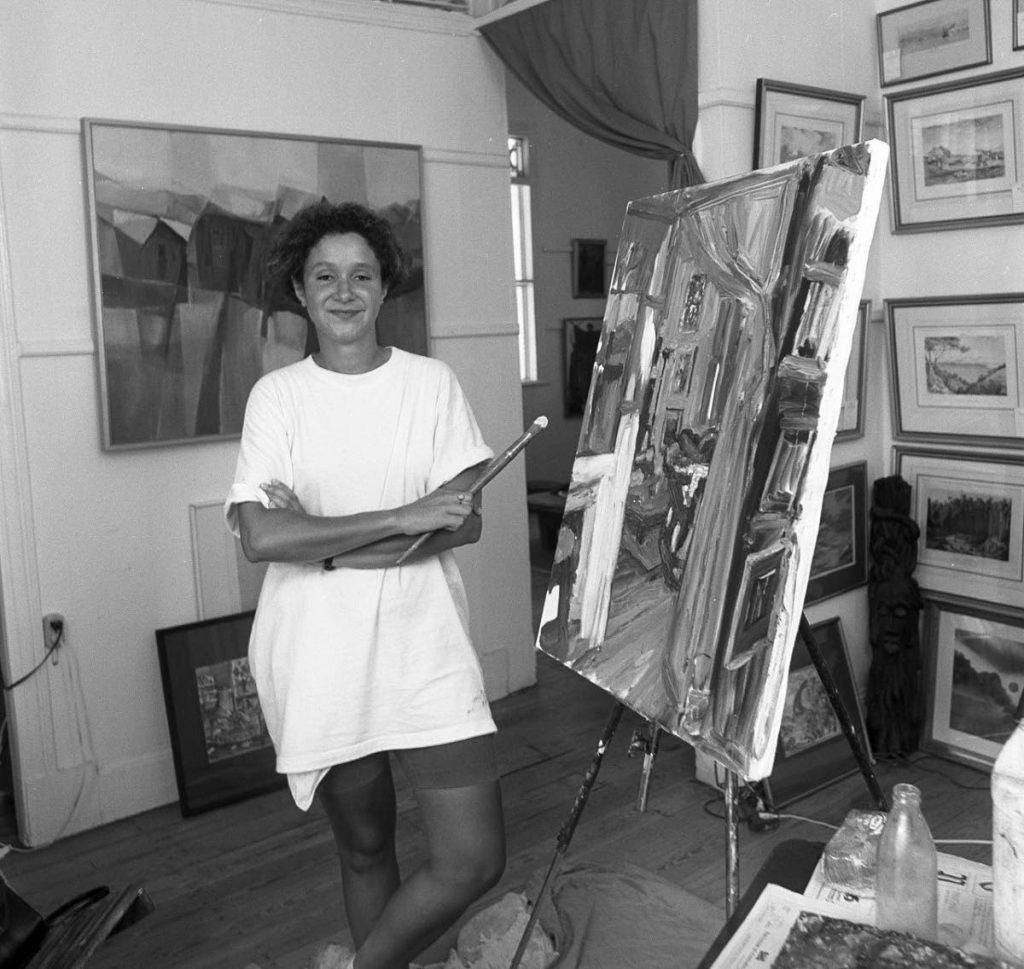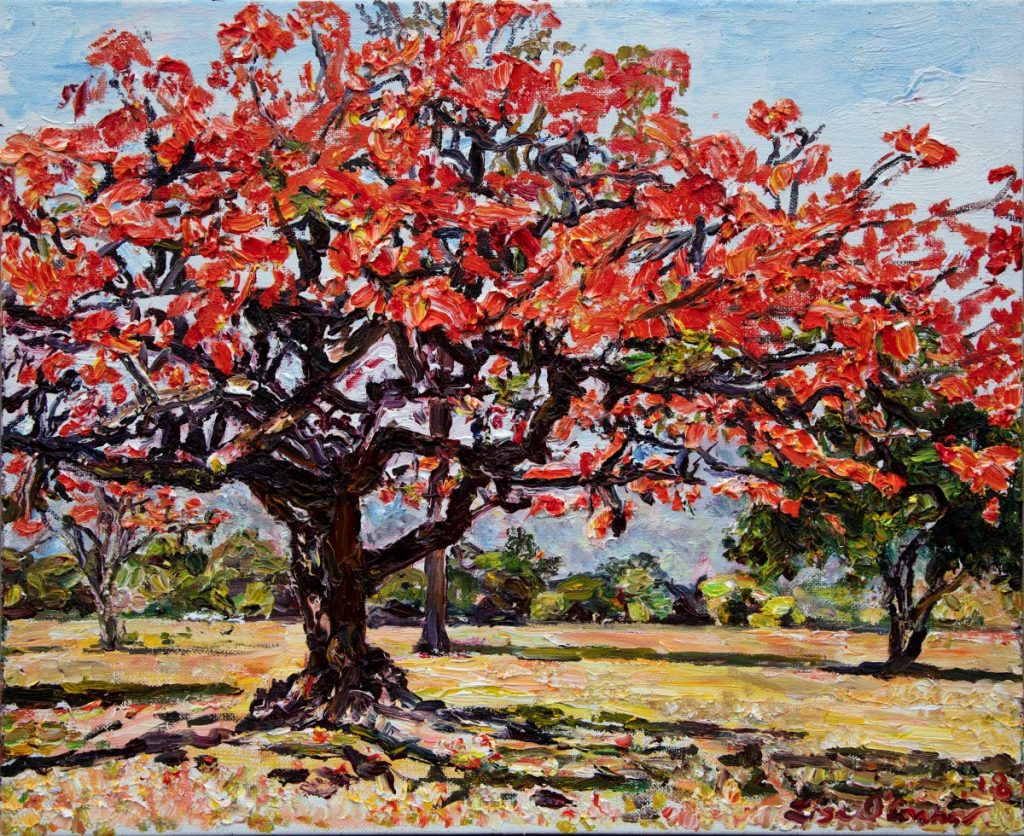Lisa O'Connor – an artist for artists

They may not have known who she was, but many know artist Lisa O’Connor as the woman who sat in or around the Queen’s Park Savannah painting.
She often sat there in her beach chair with her paints, canvas and easel to capture the buildings, trees and flowers, or at various beaches in Trinidad reproducing scenes of Caribbean life.
On Monday night she died from cancer.
Mark Pereira, owner of 101 Art Gallery and O’Connor’s art dealer for the past 34 years, said she had cancer when she was in her 20s, but she went into remission. However, the cancer returned three years ago and was not responding to treatment.
Still, he said they all thought she had more time, so had planned and were excited about an exhibition of some of her newer pieces for September.
He described O’Connor as focused, loving, and quiet, a woman who adored her husband and children and was a devout Roman Catholic who did a lot of work with the church. He said she was always generous with her advice, especially with art students, and would take the time to encourage them and give them pointers.
“In terms of her impasto method (applying paint thickly, creating a textured surface) of painting, she was a master artist.
"Her death is a huge loss to the art community especially as she died so young. She was one of the most respected artists by all the other artists.

"She was always available, always cheerful, always positive with something good to say, and dedicated to her work. Anybody in Trinidad would have seen this girl sitting under the trees opposite the Gingerbread House painting, or on Maracas beach.
“When you look at her work, it resonates with your soul. It resonates historically, culturally, geographically, nationally. You look at her paintings of the Savannah with nothing going on but all the poui trees flowering, paintings of Maracas...your soul identifies with and has a response to it.”
He added that O'Connor never involved herself in social issues but instead recorded the beauty of TT as she saw it. And that beauty, he said, was something that is needed at this time.
Artist Kenwyn Crichlow too described O’Connor as a private, quiet, and soft-spoken person. He said she was one of the country’s few plein-air painters, and he would often see her sitting and painting in the hot sun.
“That’s hard work, you know. It’s hard work of observation and working with the light that shades objects and changes so dramatically in this place (TT). It tells you something about the intensity of her work, the discipline that she was able to practise during her time. It was not a hobby. She was an active, intensive painter.”

He said although she painted many landscapes, she often returned to the Savannah as subject matter. She was a close observer of the environment and her fascination was in the way paint could capture light. She did not paint what she thought others would be interested in or what she thought people would want to see, and in sticking with her interest, her passion shone through in her work.
“She worked at it ever since I have known her. And for her to have done that, she had to have found it important. She may not have been following trends, but she was doing what was of interest to her and that is something we sometimes take for granted.”
Artist Jackie Hinkson said he had known O’Connor for about three decades.
The first time he saw her work he told her how strong the pieces were and that they reminded him of the works of American realist painter Edward Hopper, especially as her work at the time reflected the northern light of the US, where she studied art.
“It reminded me of that sense of abstraction while depicting something realistic. She never lost that ability, although working here in Trinidad she addressed our light and our heat, and she did it brilliantly. To me, even in her shadows, you could feel the light and the heat.”
Hinkson said he admired her work and her vision. In a time when it was fashionable to create contemporary or modern work, he appreciated that she was not afraid to stick to the more traditional plein-air style of painting.

“She stuck to her guns and never lost the sense of the visual essentials of formal painting – shape, tone, light, contrast, rhythm, mood and their relationships with each other – in her work.”
He added that some people believed art had to be “relevant” or address “issues” and that painting trees, buildings and mountains was not important. But he said those people missed the point because her use and manipulation of painting essentials was important.
He also described O’Connor as gentle in manner and very humble.
“She would ask you, ‘What do you think?' which is not as common as you would think among artists. You would never find her praising her work, but she would try to explain, in her vision, how the common, everyday, outdoor thing is worthy of being the surface subject in art and she was proud of that commitment.”
O’Connor was born in Kingston, Jamaica in 1965 and moved to Trinidad in 1977. She went to St Joseph’s Convent, Port of Spain, and has a fine arts degree from the Massachusetts College of Art. Her work has been shown in TT, Jamaica, the UK and the US.
In 1993, for an exhibition at 101 Art Gallery, O’Connor wrote, “I have an easy outgoing and adventurous nature, consequently I have an attraction for the outdoors and may unwittingly take risks in capturing scenes on canvas. For example, I have painted on a narrow road looking down the drop off... a precipice, or at the beach front with the tide rising on me to the point of washing over my ankles. A sense of oneness with nature is achieved when I paint. This oneness is pacifying, revitalising, and inspiring to my being...
“My Caribbean environment, it’s sunlight, the fun-loving attitude of its people, and their rhythmic way of life has influenced my view on life and approach to art. This can be seen in my choice of topics, the techniques I use (eg vibrant brush strokes), and the spirit with which I portray my subjects. Nothing gives me a greater sense of satisfaction and achievement as my art and the creative process. Its transcending nature allows me to express myself and leave my mark.”
101 Art Gallery has organised an informal show of O’Connor’s works in her memory on July 4, and July 7-10.
Pereira said several collectors had contacted his gallery to share O’Connor’s work with the public. The work will not be for sale.


Comments
"Lisa O’Connor – an artist for artists"